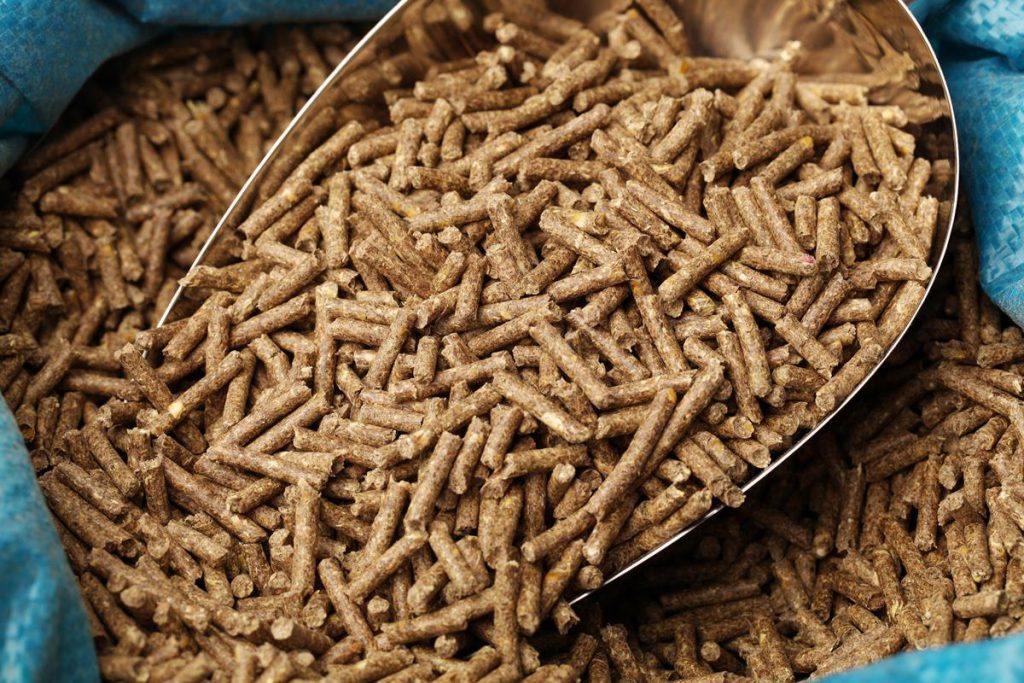A ewe’s energy and protein requirements increases significantly in the final weeks leading up to lambing, according to Teagasc’s Frank Campion.
Speaking at the Teagasc National Sheep Conference in Co. Carlow, he said one of the potential biggest causes of poor flock performance at lambing is the management of ewe nutrition during late pregnancy.
This is because late-pregnancy nutrition will have an influence on ewe body reserve mobilisation, colostrum production, lamb birth weight, lamb vigour and lamb survival.
“Roughly 70-80% of foetal growth will occur during late pregnancy which is typically defined as the period being eight weeks pre-lambing.
This growth will also have an impact on the ewe’s feed intake as the rumen can’t expand enough to meet the ewe’s requirements.
“Dietary formulation during this time is challenging as the rapid growth of the foetus reduces feed intake potential leading to the necessity to use concentrate supplementation,” he said.
1. Measure your silage
Campion said that sheep farmers need to measure the quality of silage available as this will allow them to formulate diets that meet the nutritional requirements of ewes in late pregnancy.
“To manage your ewes properly you really need to measure the quality of your silage.
“Silage quality will have an influence of feed intake and what meals you are going to need. Typically a ewe won’t be able to consume more then a kilogram of Dry Matter silage in late pregnancy.
“Silage quality, chop length, feeding method and ewe type will all influence the ewe’s ability to intake silage.
If you have a precision chopped quality silage the ewe might be able to eat a little bit more, but the intake will be less that 1kg for non-chopped bales.
The silage test results can also provide vital information on the quality, energy density, protein content and vitamin and mineral content of your silage.
2. Why is energy important?
The Teagasc representative said that energy is the first limiting nutrient when it comes to the late-pregnancy nutrition of the ewe.
“Energy requirements will almost double in the final six-to-eight weeks pre-lambing.
If we don’t get enough energy into the ewe, the performance will be reduced and this could potentially bring on fatalities and that’s why getting late-pregnancy is so important.
Sheep farmers, he said, should focus on the net or metabolisable energy content of the concentrate when formulating diets for ewes.
“Net energy is reported to be the most accurate value.
“It accounts for only the energy that is going for maintenance or production in the animal – there is no waste included in that value,” he said.
3. How much energy will my ewes need?
Campion also said that energy requirements will be influenced by ewe live weight, scanned litter size, target litter weight and predicted lambing date.
These requirements can be determined by first calculating the ewe’s maintenance energy requirement, which is the energy the ewe requires just to maintain her own body weight.
And, for every 5kg increase in live weight above 70kg the maintenance energy requirement of the ewe increases by 0.04 UFL, he said, which is then added to the energy required for pregnancy.
Table: Net energy requirements of ewes during late pregnancy
4. Meeting the ewes protein requirements
The Teagasc representative also spoke about the protein requirements of ewes in late pregnancy and he said this can be influenced by factors such as stage of pregnancy and litter size.
The requirement for metabolisable protein can increase by 35% in the final six weeks before lambing, but the ewes will also require a source of rumen undegradable protein in the last two-to-three weeks of pregnancy.
He added that soya bean meal is an excellent source of this rumen undegradable or by-pass protein and research carried out by Teagasc has shown that it can subsequently improve lamb performance over other protein sources.



